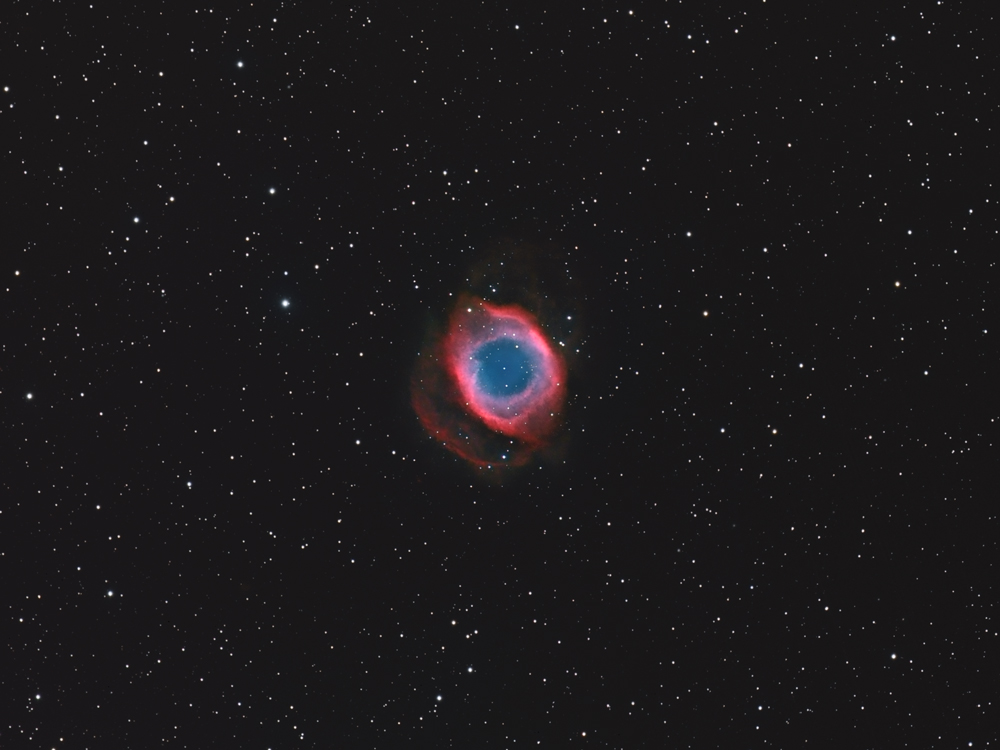
Helix Nebula: This nebula is a large, bright planetary nebula, the type of nebula which it is generally thought our Sun will produce as nuclear fusion slows and then dies in its core, and it expels its outer layers of gas. Estimates of its distance from Earth vary, but tend to be around 650 light years, making it the closest planetary nebula to Earth; it is about six light years across (including the fainter nebulosity more visible in the Ha-enhanced version).
Technical Information:
(HaL)(HaR)GB: 1020:225:135:135:135 Luminance layer consists of a blending of thirty-four 30-minute images through an Astrodon Ha filter and fifteen 15-minute images taken through an Astrodon luminance filter; red channel consists of a blending of the Ha and red-filtered data; all individual color images were 15-minute exposures through Astrodon filters. All images unbinned.
LRGB: 225:135:135:135 All individual images were 15-minute exposures through Astrodon filters. All images unbinned.
Equipment: Takahashi FSQ106 quadruplet fluorite apochromatic refractor, SBIG STL11000M with internal color filter wheel (Astrodon Type 1 filter set), on a Bisque Paramount ME German Equatorial Mount.
Image Acquisition/Camera Control: Maxim DL, controlled with ACP, working in concert with TheSky v6.
Processing: All images calibrated (darks and dawn flats), aligned, combined and deconvolved (Ha and L data only) in CCDStack. Color combine in Photoshop. Finish work (curves and levels, adjustment of contrast; Gaussian blur of color layer) was done in Photoshop CS5.
Location: Data acquired remotely from Fair Dinkum Skies, Moorook, South Australia.
Date: Images taken on many nights from July 2011 through November 2011. Image posted November 13, 2011.
CCD Chip temperature: -10C and -15C
Copyright 2011 Mark de Regt